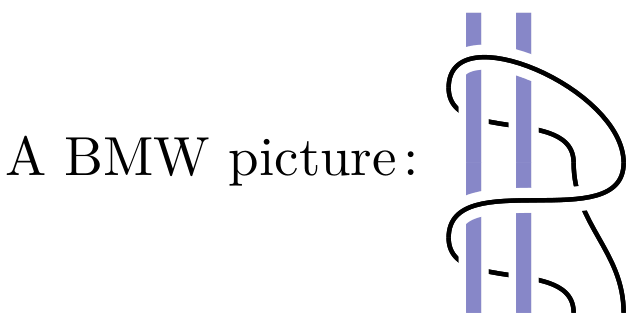Data
- Title: Handlebody diagram algebras
- Authors: Daniel Tubbenhauer and Pedro Vaz
- Status: Rev. Mat. Iberoam. 39 (2023), no. 3, pp. 845-896. Last update: Sun, 10 Jul 2022 10:09:08 UTC
- ArXiv link: https://arxiv.org/abs/2105.07049
- ArXiv version = 0.99 published version
- LaTex Beamer presentation: Slides
Abstract
In this paper we study handlebody versions of some classical diagram algebras, most prominently, handlebody versions of Temperley-Lieb, blob, Brauer, BMW, Hecke and Ariki-Koike algebras. Moreover, motivated by Green-Kazhdan-Lusztig's theory of cells, we reformulate the notion of (sandwich, inflated or affine) cellular algebras. We explain this reformulation and how all of the above algebras are part of this theory.
A few extra words
Our starting point is a diagrammatic description of handlebody braid groups of genus g, i.e. a diagrammatic description of the configuration space of a disk with g punctures. The pictures hereby are e.g.


-
Handlebody Temperley-Lieb and blob algebras. The pictures to keep in mind are crossingless matchings
and core strands
(left, Temperley-Lieb)
respectively crossingless matchings decorated with colored blobs
(right, blob):

-
Handlebody Brauer and BMW algebras. These are tangle algebras with core strands
and the picture is:

-
Handlebody Hecke and Ariki-Koike algebras, where the pictures are:

